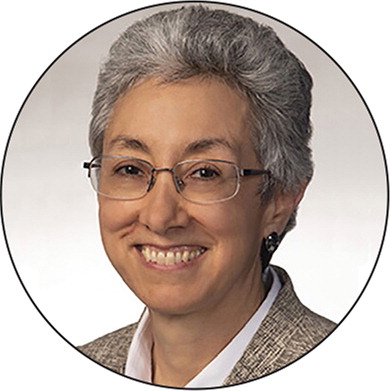
Am Fam Physician. 2024;109(6):566
Author disclosure: No relevant financial relationships.

9:00 a.m.
My first patient is a middle-aged nurse presenting with an incarcerated umbilical hernia. I page a surgical colleague who tells me to send the patient to his office so he can work her in to his schedule today. Interestingly, this is the third incarcerated umbilical hernia I have seen in the past month and the only three I have seen in my career.
9:45 a.m.
My next patient is a young woman who needs a school physical. When she was 12, I discovered a large goiter during a routine physical examination, and she was diagnosed with hypothyroidism, so I started her on levothyroxine. She later presented to the emergency department with streptococcal pharyngitis and hallucinations. She was diagnosed with adrenal insufficiency and subsequently developed celiac disease and vitiligo. This constellation of diagnoses is a condition called autoimmune polyendocrine syndrome type 2. She is at risk for type 1 diabetes mellitus and pernicious anemia. She remains stable on hydrocortisone and takes a stress dose (double her daily dose) when she is ill.
11:30 a.m.
I call a local endocrinologist to discuss a patient who has a thyroid-stimulating hormone (TSH) level of 427 mIU per L. The patient assures me that she takes her levothyroxine, 225 mcg daily. I have never seen TSH levels that high, and the endocrinologist says it is the highest she has seen, too. She wonders if the patient may have intestinal edema, which is impairing the absorption of the levothyroxine, and suggests that I double the dose and obtain free thyroxine and TSH levels in 2 weeks. She also notes that she has one patient who is taking 900 mcg of levothyroxine daily. She graciously agrees to see the patient in follow-up.
12:30 p.m.
I review correspondence from a local ear, nose, and throat (ENT) specialist. He confirms my diagnosis of a cerebrospinal fluid leak in a patient who told me that whenever he leaned forward, his nose leaked a clear fluid. The ENT sent a rhinorrhea sample for beta-2 transferrin testing and ordered a CT with fine cuts of the sinuses. The leak was located in the left sphenoid sinus. The patient will undergo a transmaxillary approach to repair the leak.
2:45 p.m.
I see a patient at follow-up to check on her hypertension. She presented about 6 months ago with transient left upper quadrant pain. A CBC showed a white blood cell count of 18,000 μL (18 × 109 per L). Although the patient's pain had resolved, I ordered a CT of the abdomen. It revealed two 9-cm masses in her left kidney and ureter. The urologist diagnosed her with stage IV urothelial cell carcinoma with diffuse metastases. She is receiving palliative chemotherapy with cisplatin and gemcitabine (Gemzar) from the oncologist and is doing reasonably well.
5:45 p.m.
I hear from the surgeon who repaired the incarcerated umbilical hernia on the patient I saw earlier today. She is doing well after surgery and has been discharged home. I think it may be a world record for efficient, timely care.
6:00 p.m.
I review a report from an oncologist about a patient I treated 1 year ago for a 1-week history of severe back pain. The patient had requested an MRI because he had been losing weight. I was unsure if the MRI was appropriate because he had pain for only a short time, but I ordered it anyway. It showed a T-11 pathologic fracture that was concerning for metastatic disease or myeloma. I had treated his mother 34 years ago for multiple myeloma and wondered if there could be a genetic predisposition for this. An internet search proved that there could be a link; I ordered myeloma studies and the results were positive. The patient underwent autologous hematopoietic cell transplantation and is doing well. He is taking lenalidomide (Revlimid) and denosumab (Xgeva), treatments that were not available to his mother.
6:15 p.m.
I reflect on ordering the MRI and CT that may not have been indicated for my patients, and yet they showed significant pathology. I try to be mindful when ordering expensive tests, but I believe that intuition earned over decades of practice is something I have learned to heed.

